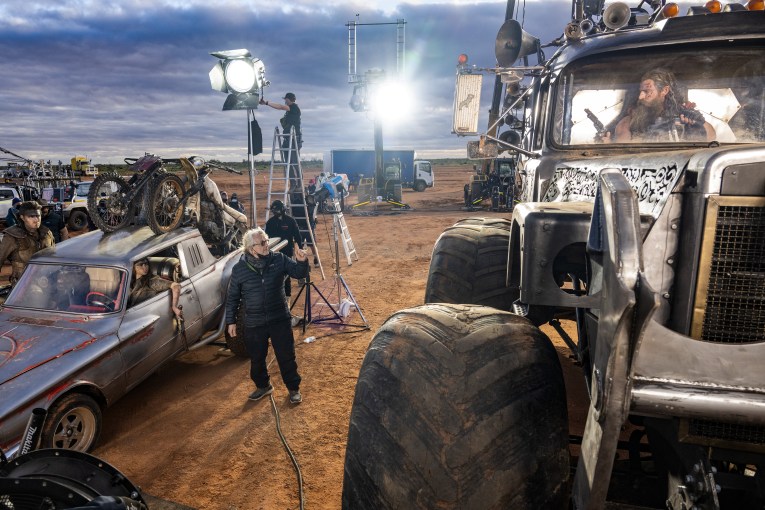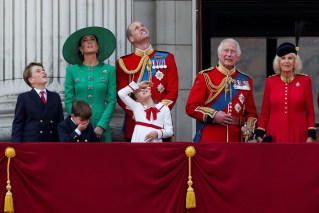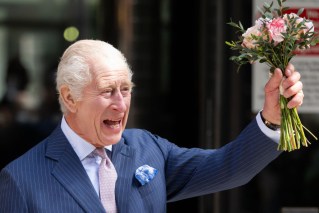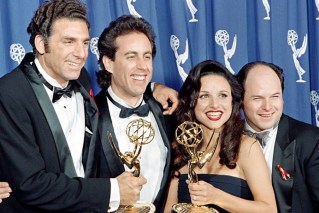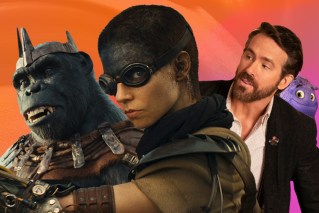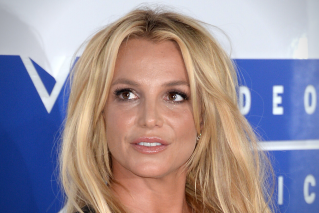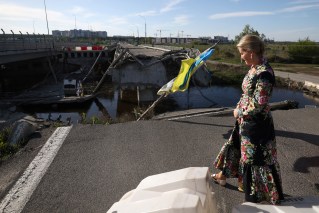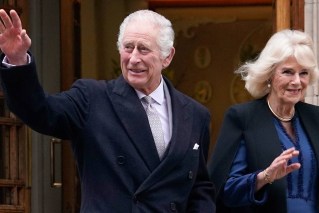Bluey stars on world stage, but back home the future is bleak for Aussie kids’ TV

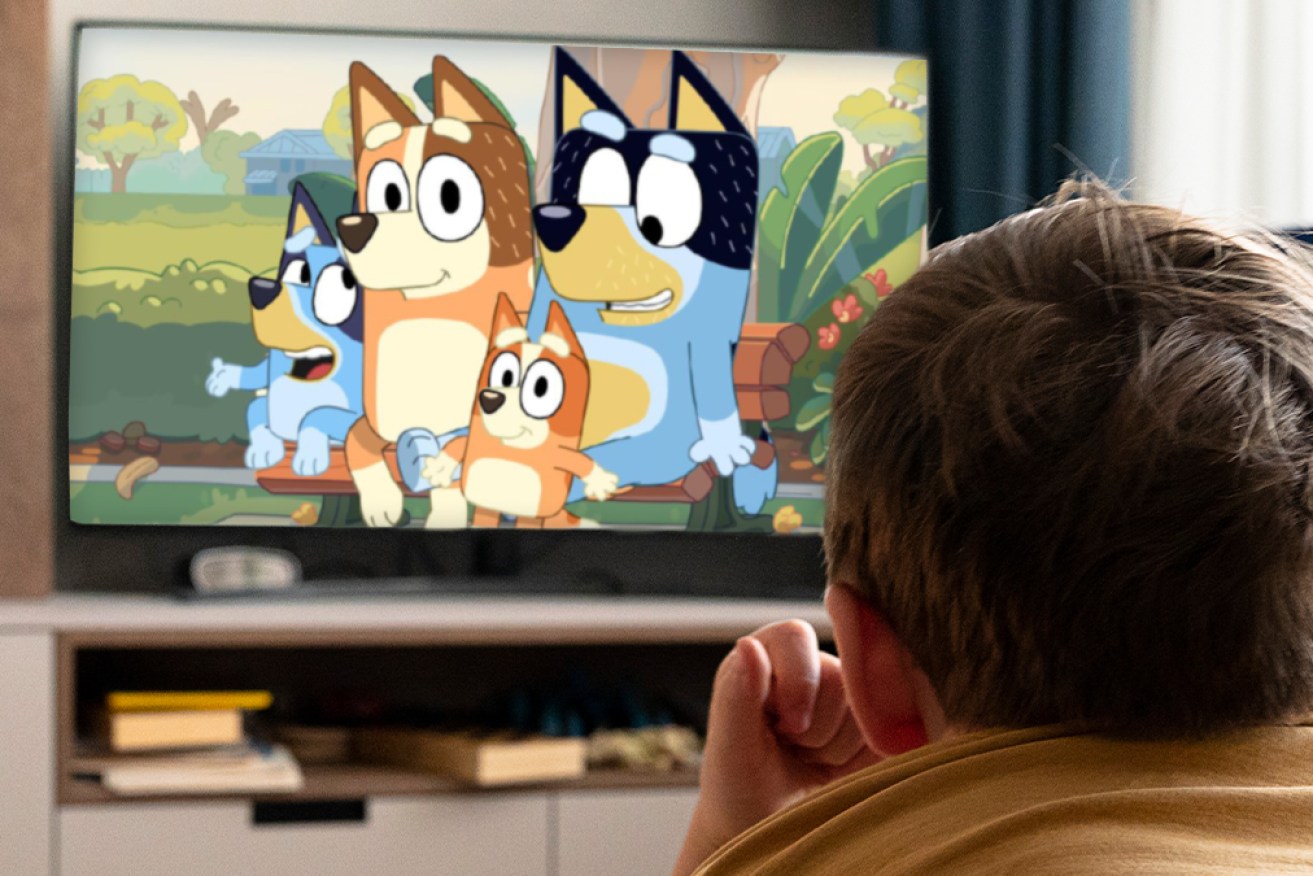
Kids and parents are loving Bluey the world over, but production of Australian children's programming is flagging. Photo: TND/ABC/Getty
The accolades just keep coming for home-grown hit TV show, Bluey, but an expert says production of Australian children’s content has “fallen off a cliff” in recent years.
Nielsen data shows American viewers have watched 1.4 billion minutes of Bluey, which streams on Disney+ in the US.
The show, which revolves around titular Blue Heeler pup Bluey and her family, has become a worldwide smash hit since its 2018 debut.
Three seasons and more than 100 episodes into the show, Bluey has sustained praise from parents, kids, and even international awards shows. It has scored nominations and wins from BAFTA Children & Young People Awards, Critics’ Choice Television Awards and International Emmy Kids Awards.

The beloved Australian blue heeler soared above the crowds at the 96th annual Macy’s Thanksgiving Day Parade last year. Photo: officialblueytv
While the creators of the hit show have not announced any plans for a spin-off film, Melanie Zanetti (voice of Bluey’s mum, Chilli), stoked hopes when she told New Idea that she thinks it’s time for a Bluey movie.
“The show is just very universal in the way that it follows a family. I’ve spent a lot of time in the US and they all have the same reception to the show,” she said.
“So many people tell me that it’s like watching a little bit of Australia move by in a little window, which is so lovely.”
Anna Potter, University of the Sunshine Coast associate professor in communication, told TND that Bluey‘s “clever” recipe for success largely relies on appealing to both children and parents.
“And it really speaks to the universal experience of parenting; people’s aspirations around parenting and wanting to be better parents, and wanting perhaps to be more present,” she said.
“It very skilfully portrays what that very engaged parenting looks like, but it’s also very funny … and the jokes are there for both kids and their parents.”
What Aussie TV shows teach global audiences
Dr Potter said Australian kids’ TV has historically been considered a form of soft power; something that could influence international behaviour and thoughts on Australia without the use of force.
Specifically, local children’s productions tend to promote the easygoing, beachside, sun-kissed stereotypes of Australian life.
“I know from all those live-action dramas that [Australian producer] Jonathan Shiff made, they were all showcasing the Gold Coast, beaches, sunny climates, and kids in Europe just love them because they thought everyone in Australia lived by the beach,” Dr Potter said.
Particularly popular shows, like Bluey, could even influence how people in other countries speak.
Some American parents report after watching the show, their children have developed slight Australian accents and adopted some Australian vocabulary, such as ‘brekky’ instead of breakfast.
Australia is no stranger to having international fans for its locally-produced children’s TV shows.
But apart from shows like The Wiggles, which first aired on the Seven Network in 1998, many of the country’s most popular children’s exports have been targeted at slightly older audiences; these include projects like Dance Academy, H2O: Just Add Water, Nowhere Boys, Round the Twist and Blue Water High.
Content quotas abolished
But the volume of Australian children’s shows, for either the younger or older demographics, has fallen dramatically over recent years.
Dr Potter said a lot of the blame lies on the government’s 2020 decision to rid commercial broadcasters of an obligation to air a certain amount of local children’s content per year.
Prior to that decision, the strict quotas stood at 130 hours for pre-school children and 260 hours for children under 14; from 2021, Australian commercial broadcasters had no such obligations to fulfil
The move came after the commercial broadcasters lobbied against quotas, arguing Australian kids weren’t tuning in.
Dr Potter said while kids are more likely to stream shows on demand rather than watch them on linear TV these days, the removal of the government’s quotas and less ABC funding dedicated to producing children’s content has had a dramatic impact.
“Now the only demand is coming from the ABC, and to some extent, from streamers like Netflix,” she said.
“So we’re less likely to see those global hits, because kids’ TV production has fallen off a cliff since 2021, when the quotas were dropped.”

Shows like Dance Academy quickly gained a local and international fan base, but now they’re a rarity. Photo: ABC iView
Massive drop in production
Locally made Australian children’s television content decreased by more than 84 per cent, from 605 hours to 95 hours, between 2019 and 2022, according to a report by the Australian Media and Communications Authority released this year.
Even the ABC, which produces the majority of local children’s content, has dramatically reduced its slate of shows targeted at older children, along with the standard number of episodes in a season of many of its shows, Dr Potter said.
“Now we’re all just relying on the ABC [for children’s content]. But the ABC can’t be all things to all Australian children, it just doesn’t have the resources,” she said.
“Unless you’ve got demand being driven by content quotas, or by local content obligations, people can just stop investing in [children’s programming] when the going gets tough.”
